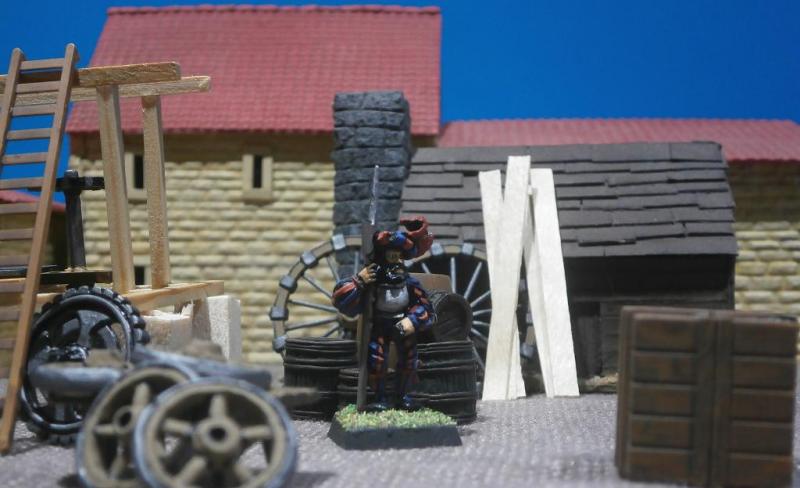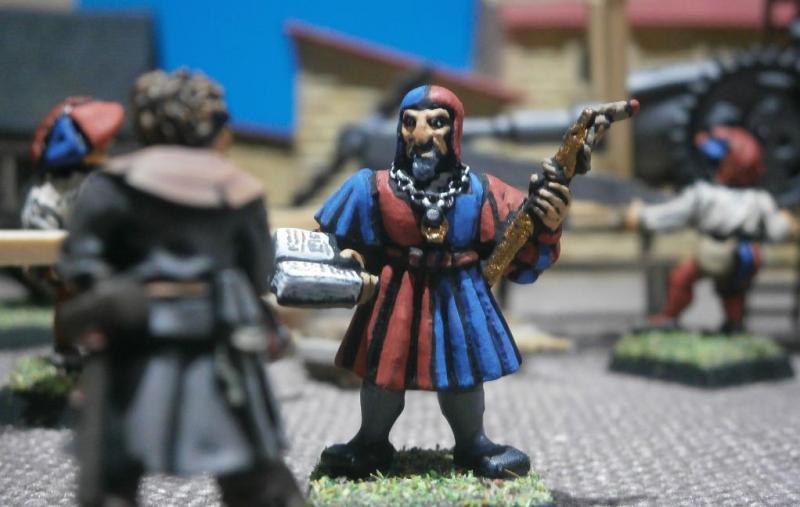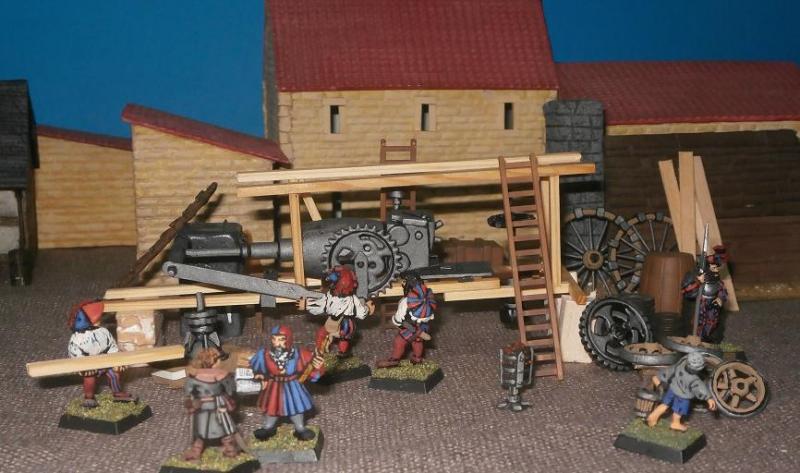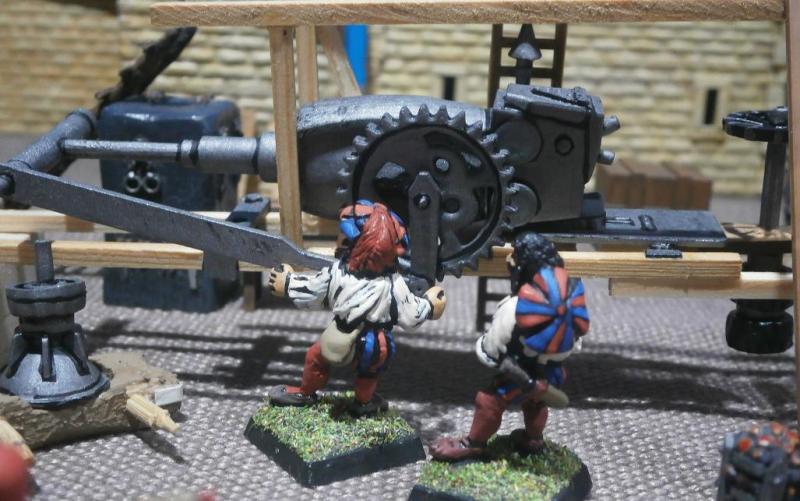Padre
Lord
I wanted a tank that was believable - that looked like it might just work, with convincingly functional internal working parts.
Photos of the engine construction ..



All that work is mostly hidden from view now. I may have gone a little bit insane? But I did it this way so I could do a story piece about the game-world construction for my campaign ...
Next up, the body.
Photos of the engine construction ..



All that work is mostly hidden from view now. I may have gone a little bit insane? But I did it this way so I could do a story piece about the game-world construction for my campaign ...
... Upon arrival in Remas I was surprised to discover no sign of the legions of crusaders I had expected. In truth, however, I think it unlikely that any who do intend to respond to the arch lector’s call can have both mustered together and completed the journey in the short time available. As for the Remans, if I may venture my own humble analogy, it seems to me that they are like actors before a play begins. Many speak of those who are coming, alive and undead, as if they are the heroes and villains who shall take to the stage. They are much busied with fashioning the stage for the drama, repairing the city’s ancient defences and practicing their military drill and postures from the earliest hour of daylight. Martial law reigns in the streets, which swarm with the provost’s officers and common informers, in readiness perhaps for the rowdy crowds of crusaders who will surely come to play their parts. Furthermore - as you so wisely suggested to me before my departure - it is indeed the case that the arch lector of the Church of Morr once again rules supreme in the city, wholly governing matters military, civil and spiritual. He has become director of all.
Perhaps as a consequence more of the arch lector’s return to full power than the great emergency, there are changes afoot. Remas’ famous army of foreign mercenaries is no longer so purely alien. A new artillery company has been raised, and a baggage guard, both of whom consist entirely of Reman subjects, wearing the traditional orange and blue livery of the arch lector. They are listed merely as new companies of the palace guard, but it is plain to all that they are more suited in strength to support a large army in the field than stand duty at gates and doors.
I was intrigued to learn that in response to the great emergency the renowned artist Angelo da Leoni had laid down his brushes and turned his famous intelligence to the matter of engines of war once again, as he did in his more youthful years. Eager to see exactly what he was working on, I made my way to his workshop where I unsurprisingly discovered that already the great inventor’s efforts were being sponsored by the arch lector: palace guardsmen guarded the workshop and yard in which da Leoni laboured.

Not that the guards were particularly keen to keep the maestro’s work secret, rather to ensure simply that he could go about it undisturbed. In fact, they were happy that those who came might look through the open gates to see the efforts being made, and indeed the city’s streets are already rife with gossip about the deadly engine and how exactly it would help defeat the foe. Such news helps raise the people’s spirits, and no doubt the arch lector intended from the start that it should do so. I myself cannot claim to have the mechanical understanding to guess at the workings of the machine, so I will simply explain what I saw.
The maestro himself was present when I visited, book in hand as he gave instructions to the craftsmen labouring upon his creation. He is a stout, stern looking fellow in his old age, no longer anything like the youthful figure shown in the self-portrait in your lordship’s palace. He too, like most of the workers in the yard, wore the arch-lector’s livery, as well as a chain of office which I later learned signified his rank as general of artillery.

The machine itself had a heart of iron, enclosed in a growing case of timber. Massive wheels lay strewn about the yard, presumably yet to be attached, although some wheels where of solid iron and like unto those contained within the workings of a clock, though upon a much larger scale. I saw no sign of armament, neither artillery pieces nor rams nor even a platform upon which fighting men might be carried, and although it is probable such things will be added later, I would not care to suggest that they most definitely will. For all I know, some sort of flail is to be fashioned, or perhaps great scything blades, like those described in the stories of goblin pump wagons, so that it can cut a swathe of destruction through the enemy’s ranks and files. Certainly the people of Remas seem happy to make any and all of these suggestions.

My eyes lingered upon what I presumed to be the driving part of this machine. It consists of a great, iron kettle, shaped somewhat like a large barrel, out of which sprout arms, wheels and stove-like extensions. I saw no tiller, nor any obvious harness for a team of horses, but instead what I supposed was a form of steering wheel. It seemed to me that the whole was some time from completion, although I cannot say whether more work is being done elsewhere, behind closed doors, so that like a firearm is composed of the joining of barrel, stock and lock, perhaps several parts will come together quite quickly to complete this machine.

Every day the arch lector receives emissaries from foreign states ...
Next up, the body.



















